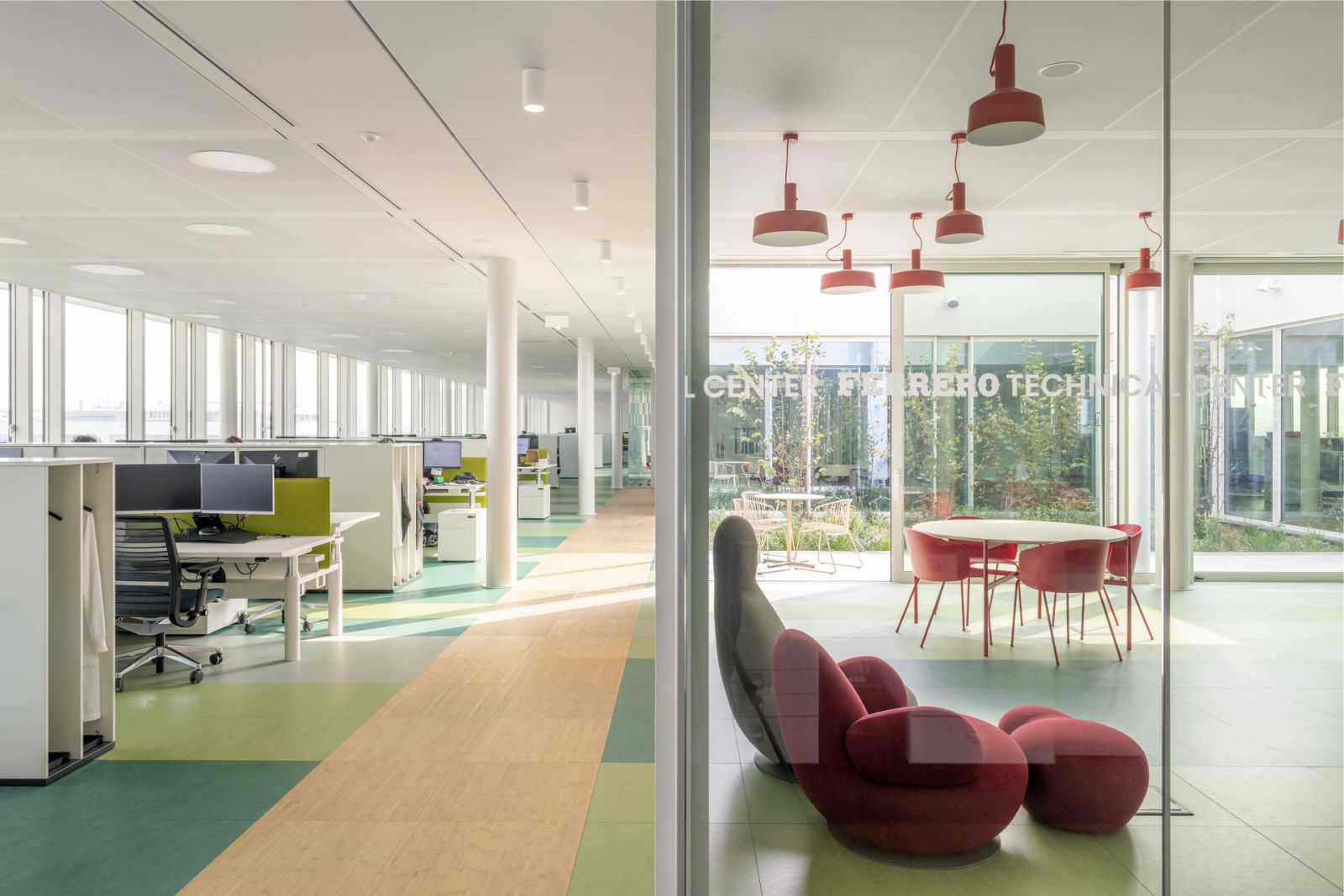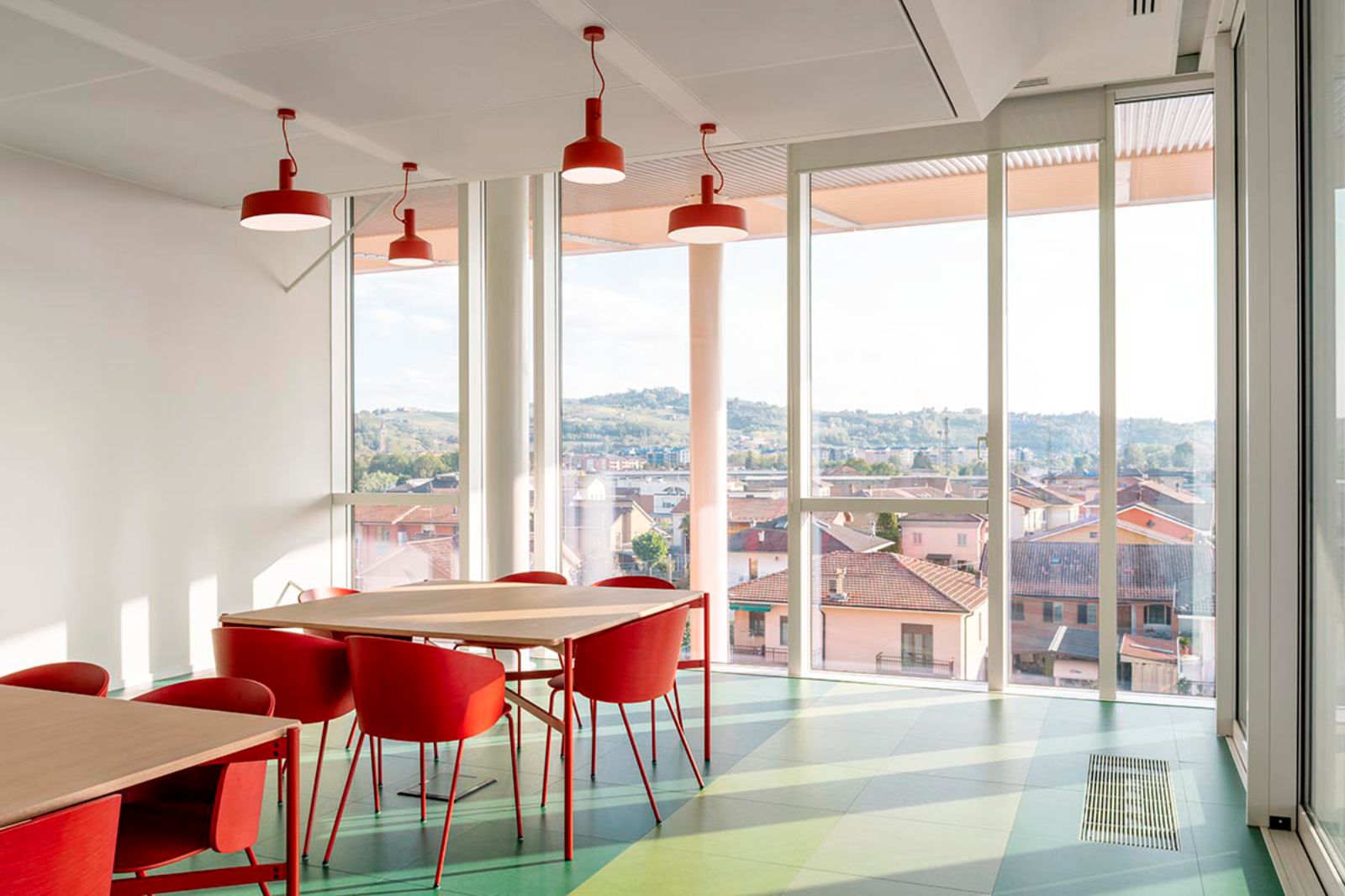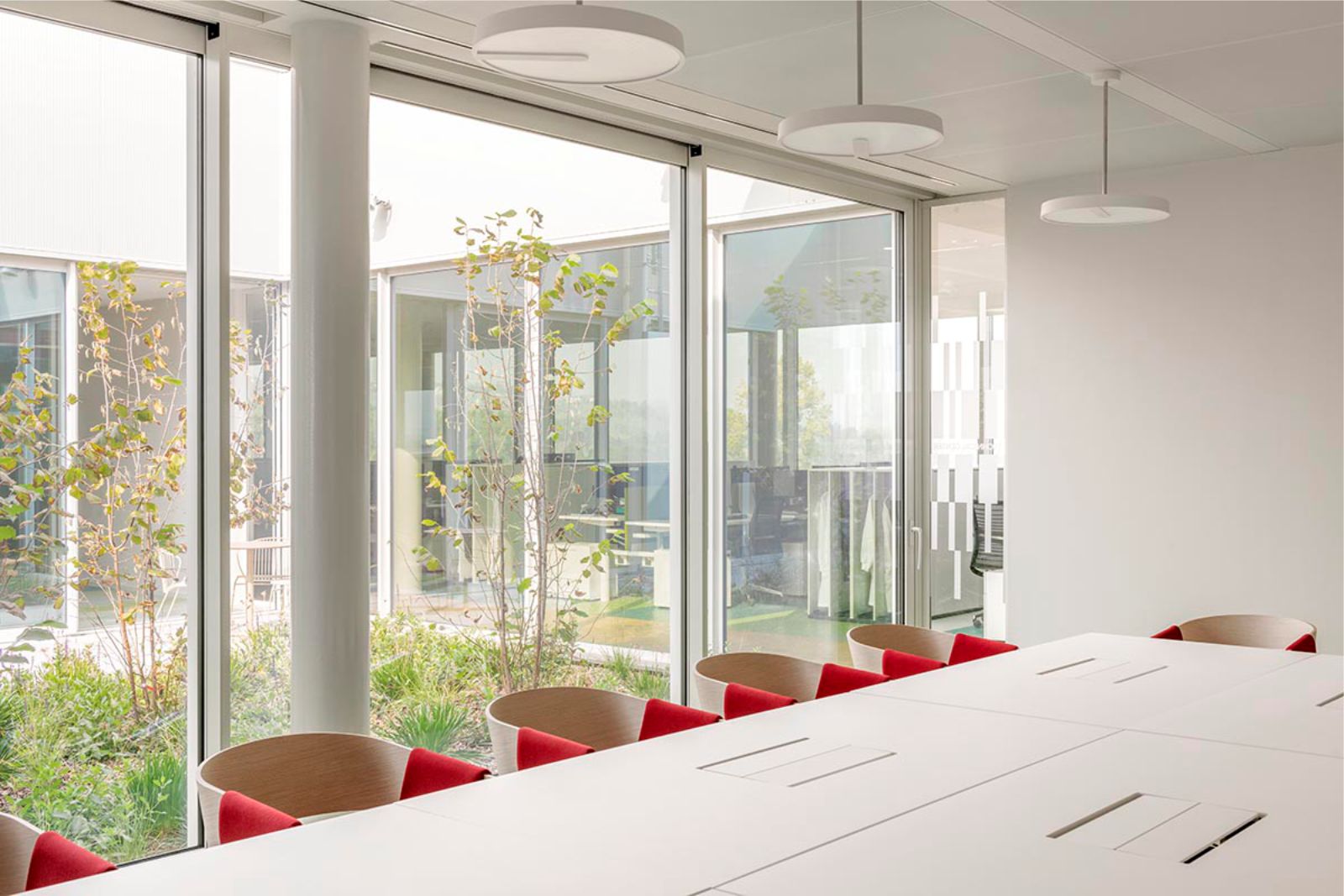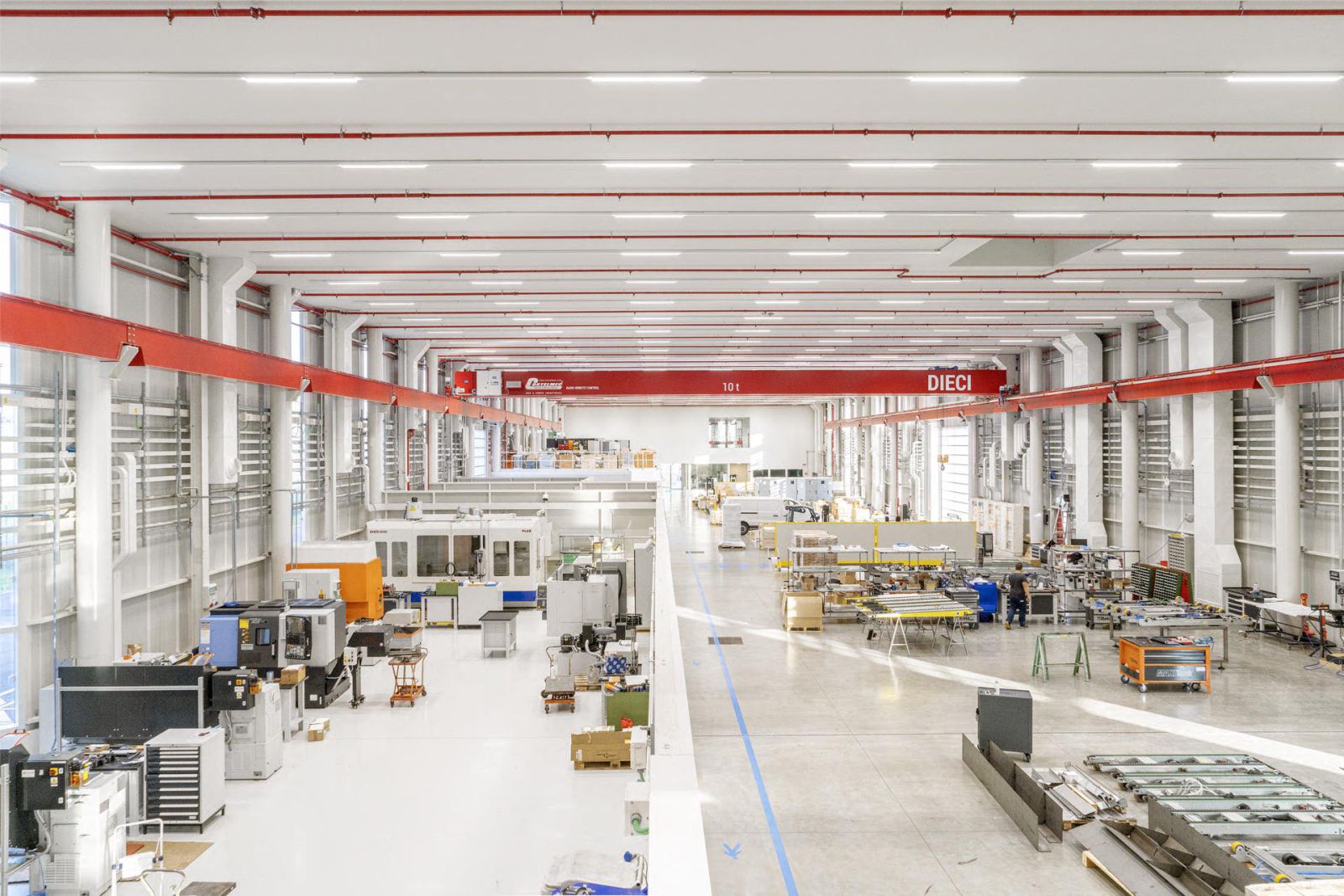The new technical innovation center for Ferrero, one of the largest chocolates and confectionery companies in the world (renowned for its brands such as Nutella, Kinder and Ferrero Rocher) is now at full speed. The Ferrero Technical Center represents a new frontier for industrial architecture in the name of total quality.
Adhering to the standards of Industry 4.0, it focuses on automated and interconnected production, where people and machines work in unison, while respecting its ecosystem. Technology is always seamlessly integrated in a recognizable and reassuring architecture, bringing together the group’s corporate identity, history and know-how. An invaluable know-how that the company wanted to keep in Alba, Italy, a city intrinsically linked to its history and where its headquarter is located.

Frigerio Design Group followed its approach in slow architecture: projects, developed to ensure minor ecological impact, are long-lasting and draw on resources from the local context for their definition, with an iconic and reassuring architecture not only originating from the natural context, but actually connecting to it. The architecture is integrated in the surrounding environment and builds links with the most characteristic elements of the landscapes typical of the Langhe, an area designated by UNESCO as a world heritage site.
Alba is also home to Ferrero’s largest Italian production site. An in-depth study of the area, in addition to factors such as the attachment to its territory, nature and colours gave inspiration to Frigerio Design Group’s architectural project, which reinterprets them through abstract geometries with the warm shades of an autumn landscape. The new center supports management and operational functions and boasts a 12,700 sqm ecological building that is nZEB (nearly Zero Energy Building) and will host 200 employees.
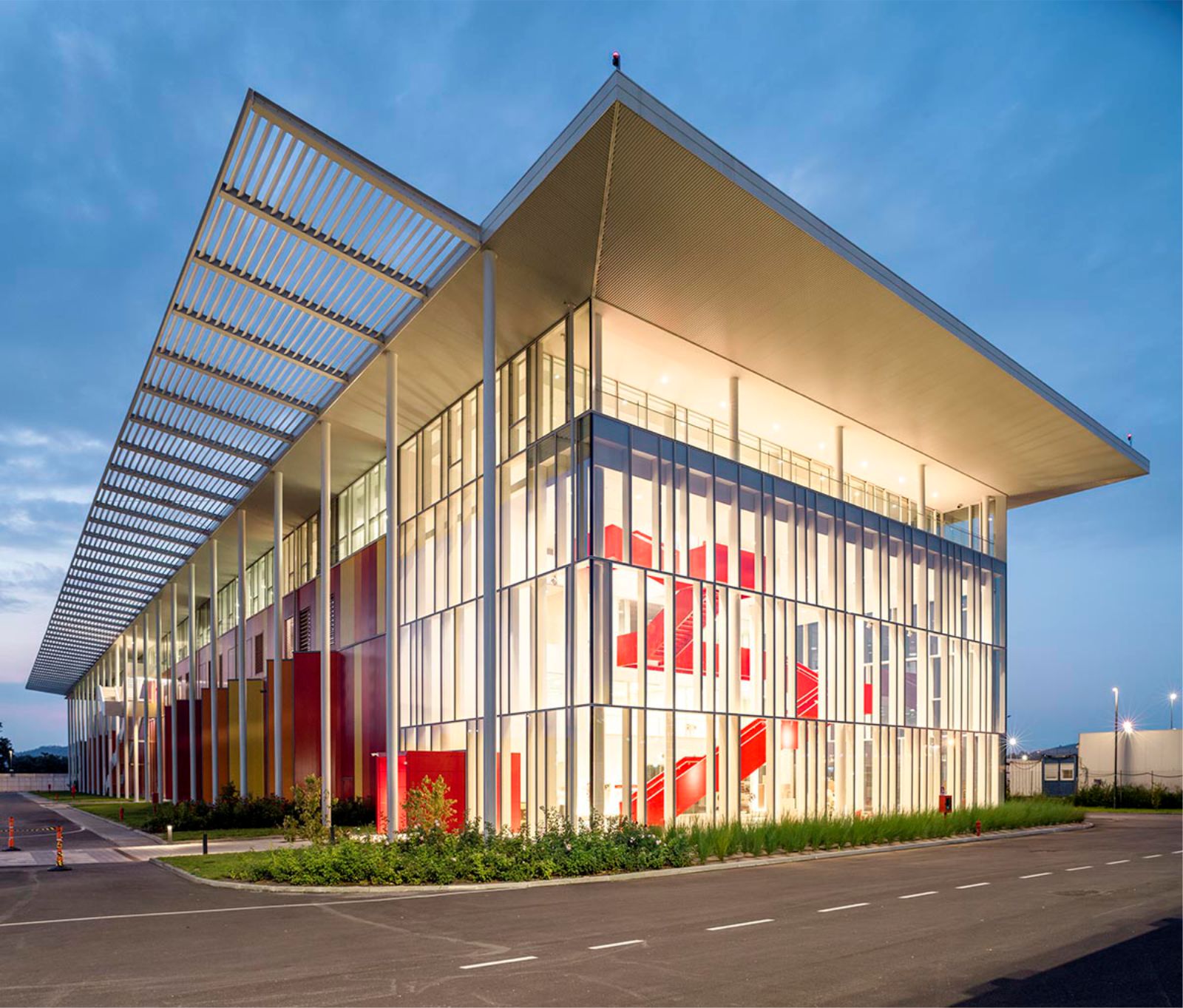
Simple and linear architecture conceals plants and technical equipment. The compact building maximizes all the passive space and minimizes the resources needed for operations and maintenance. The lower area houses production and the upper area is for office space. The areas are shared by using blind surfaces below and transparency above. Safety and sensorial comfort are key to the entire architecture.
The Architectural Project
Between land and sky, opacity and transparency are designed to emphasize functions to define the iconic architecture: The offices located on the last floor have transparent facades, whereas the lower floors containing the workshop and plants are hidden from view. The main goal of the Ferrero Technical Center project was to give justice to different functions but closely related.

The workshop for building the machinery for Ferrero manufacturing sites is placed on the ground floor together with all the operations related to their design, while nearly the entire upper floor is dedicated to various offices, both executive and operational, in addition to workspace, conference rooms and staff areas. The huge lobby is glazed entirely. It is the reception area and staff entrance and concentrates the perception of the whole Ferrero universe into a single space.
Inside there is a metal grand staircase in vibrant red that goes up like a “suspended walkway” offering an initial view over some of the operations at the core of the building. Overlooking the lobby are the enormous windows of the mezzanines, experimentation areas, conference rooms, office space for consultants, a lounge and changing rooms for staff.

All the technical areas and systems are integrated in the facades or hidden in the mezzanine, connecting its 3,300 sqm of design and production. The structure has a flat, jutting roof with a southfacing shade and sun-breaker portico with elliptical blades. The 3,500 sqm workshop, with its open span of 25 m and length of over 100 m, is where the machinery is assembled. Its floorplan is essential and rectangular, white in colour, with its metalwork and architectural plant in full view.
Openings in the facade capture natural light and air while shading direct sunlight, thereby reinterpreting the typical industrial shed, which could not be achieved here due to the building’s layered construction: The architect Enrico Frigerio defines them as “gills”, actual features that enable the building to breathe. Perimeter infill panels around the industrial building have a micro-perforated and sound-absorbing surface in order to improve the quality of the workspace and reduce noise pollution.

Office space
The materials and colours replicate the nature surrounding the building, making the offices an actual “raised landscape”. A series of green patios, the architect calls “hanging gardens”, are placed at the center of the large open space to provide a bioclimatic, acoustic and aesthetic function. The office space, located on the last floor, extends over an open space of 4,100 sqm. It holds conference rooms, private areas and relaxation space enabling workers to use ergonomic stations overlooking the landscape.
Environmental sustainability
The building is compact, dry-assembled industrial material is used in its construction. It maximises all passive input (light, air and sunlight) and keeps to a minimum the resources needed for operations and maintenance, while at the same time contributing to its clear and individual identity. A photovoltaic system is installed on the roof that generates up to 300 kW peak. A series of counterposed openings makes it possible to provide natural ventilation during midseasons. Source by Frigerio Design Group.

- Location: Alba, Italy
- Architect: Frigerio Design Group
- Project Team: E. Frigerio with C. Ginocchio (project leader), S.Rota, S. Stevanè, D. Bona, M. Verdona, F. Valido, A. Alessi, A. Chiappini
- Structural design PFTE, PD, PE: Redesco Progetti
- MEP: Ariatta Ingegneria dei Sistemi
- Giardini Volanti: AG&P greenscape
- Fire prevention and safety plan: C. Manfreddo
- Geology: O. Costagli
- Plumbing: S. Sordo
- Acustics: E. Bocca
- Construction supervision e CSE: Recchi Engineering
- General Contractor: Co.Ge.Fa.
- Project Manager and Site Manager: G. Forte
- Site Manager: A. Sega
- On-site technical support: P. Masci
- Client: FERRERO group
- Surface area: Lot 14.500sq m2, Building 12.700 sq m, Parking 4.100 sq m
- Year: 2022
- Photographs: Studio Campo, Enrico Cano, Lorenzo Bartoli, Courtesy of Frigerio Design Group


